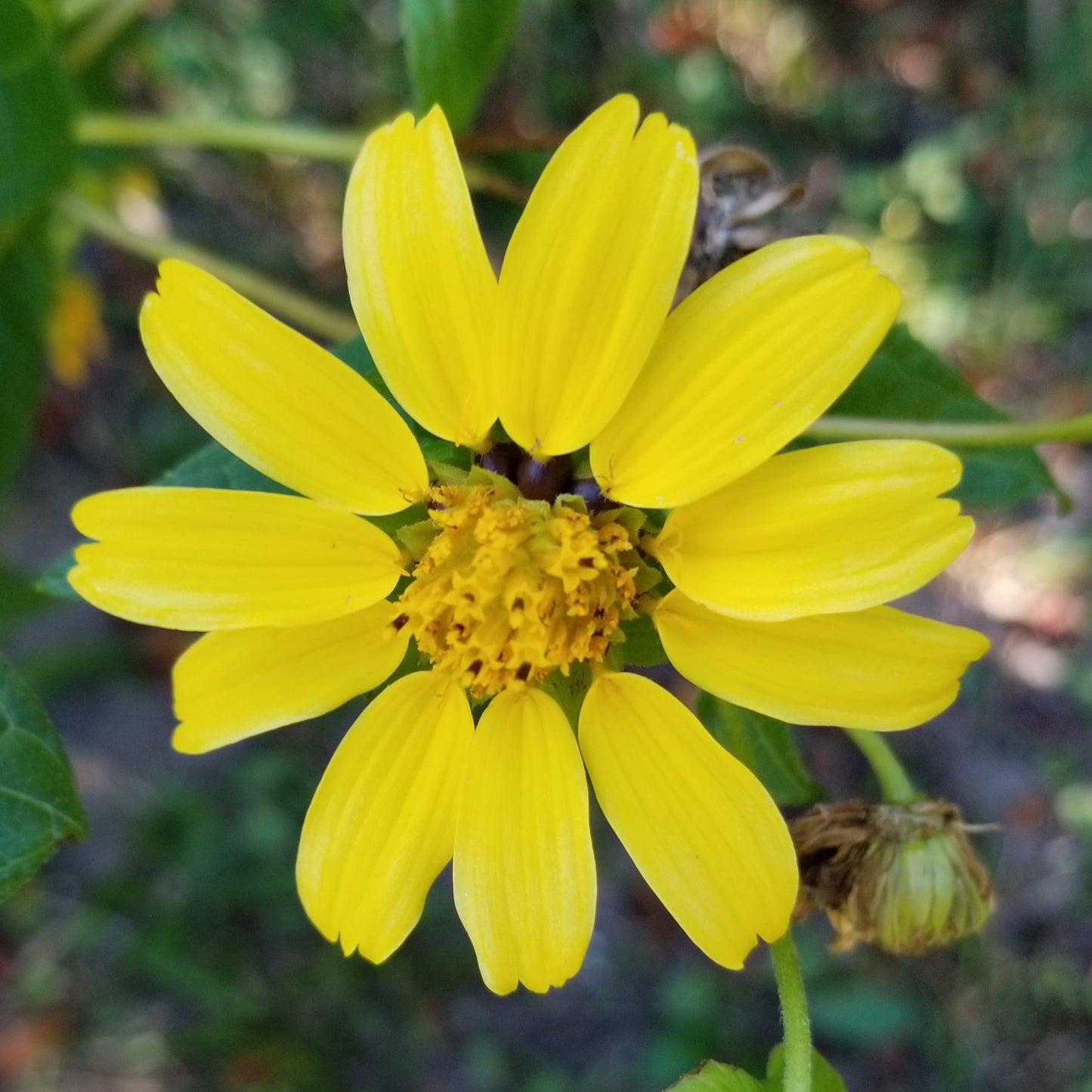Gnarly Nursery
Smallanthus uvedalia, Hairy Leafcup
Smallanthus uvedalia, Hairy Leafcup
Out of stock
Couldn't load pickup availability
Hairy Leafcup
Also known as Bear’s foot, Hairy leafcup (Smallanthus uvedalia) is an uncommon herbaceous perennial with bright blooms comprised of yellow ray and disk florets. Ray florets are notched at the tips. Flowers are borne on branched panicles. Leaves are distinctively broad and palmately lobed or dissected, giving the leaf a “bear’s foot” appearance (hence the common name). Each leaf has a prominent midrib, rough surface and toothed margins. Lower leaves are oppositely arranged, while upper leaves are alternate. Stems are hollow, ribbed and may be mottled with purple. Fruit is an almost-spheric achene.
Hairy leafcup occurs naturally in upland hardwood forests, slope forests, upland mixed woodlands, and moist shaded hammocks. It typically blooms in summer and attracts a variety of bees and other pollinators.
Smallanthus uvedelia was formerly placed in the “leafcup” genus – Polymnia — and was known as Polymnia uvedalia. It was reclassified as Smallanthus and is currently the only species in the United States in that genus. It’s cousin, Tennessee leafcup (Polymnia laevigata), is endangered in Florida, and is found only in the upland hardwood forests of Jackson County. Its flowers are small, white and not showy.
An herbal tincture made from hairy leafcup’s roots was created by Dr. J.W. Pruit in the 1870s (although prior uses have been documented). It was used to control internal or external bodily inflammation and also was sold as a rheumatism medicine. In the early 1900s, William Brooks Medicine Co. began selling “Brooks’ Bears-foot Ointment.” It claimed to treat “piles, sores, itch, tetter, eczema, chronic sore legs, dandruff and other scalp diseases, mange in dogs, sore backs and sore shoulders in horses.” The tincture also was used as a tonic to stimulate hair growth and can still be found in some hair lotions.
Family: Asteraceae (Aster, daisy or composite family)
Native range: Most Panhandle counties west of Jefferson County; central and north-central peninsula
To see where natural populations of hairy leafcup have been vouchered, visit www.florida.plantatlas.usf.edu.
Hardiness: Zones 8A–9B
Soil: Dry to moderately moist, well-drained soils
Exposure: Partial sun; shaded areas with light gaps
Growth habit: 3–5’
Propagation: Seeds
Garden tips: Hairy leafcup is adaptable to a variety of growing conditions. Its large size and stature can make a bold statement in a moderate to dry shaded garden, particularly when paired with plants of similar size and contrasting colors such as frostweed and cardinalflower. It also pairs well with low shrubs such as wild coffee or rouge plant. Do not cut back in winter as bees will make nests in the large hollow stems to overwinter.
Share



